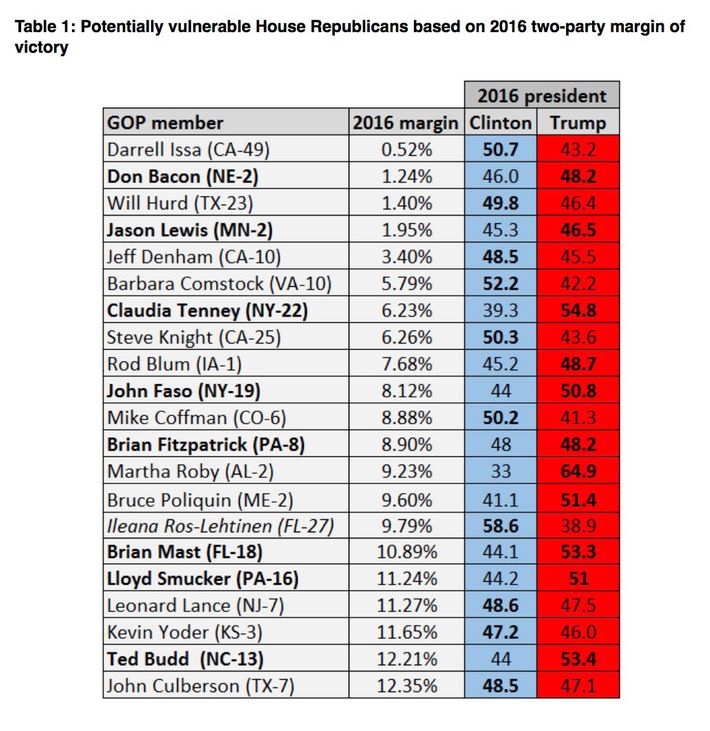
The good news for House Republicans, according to a detailed analysis of the midterm landscape from Kyle Kondik of Larry Sabato’s Crystal Ball, is that 226 of the 241 GOP winners last year won by a double-digit margin, typically the definition of a “landslide.”
The bad news is that in the last three midterm elections (2006, 2010, and 2014), the average House incumbent representing the party that controlled the White House suffered a negative swing of 12 points. So even “landslide” winners in the previous cycle got quickly into hot water when the midterms rolled around.
Indeed, fully 21 House Republican incumbents won by 12 points or less in 2016. Ten of them also represent districts won by Hillary Clinton.

Alert observers will note that even if all 21 seats fell to the Democrats — and they lost none of their own — that still wouldn’t be enough to flip control of the House.
The hunt for additional pickups might begin with the 13 House incumbents who did win by more than 12 points in 2016 — but whose districts were carried by Hillary Clinton. And perhaps even more promising are open seats, as Kondik notes:
[T[he results in open seats defended by the presidential party [in the last three midterms] saw huge swings in favor of the opposite party. In such seats, the presidential party share declined about 11 points from the presidential to the midterm elections — or 22 points in terms of margin — and the president’s party only held 25 of the 46 seats included in the study over the three midterms.
At the moment, there is only one open GOP House seat where the Republican stepping down won by fewer than 22 points (the 27th district in South Florida, long represented by Ileana Ros-Lehtinen, which Hillary Clinton carried by nearly 20 points). But additional retirements in the next few months will produce more open GOP seats, and probably more targets.
There is no guarantee, of course, that 2018 will be an “average” midterm. But given President Trump’s persistently low approval ratings and the current high level of political engagement among Democrats, if anything, the next midterm is likely to produce an anti–White House wave that is above average. So while Republicans have done a good job via gerrymandering in making a very high percentage of their incumbents safe, the benchmark for “safety” may be higher than ever, too.






























